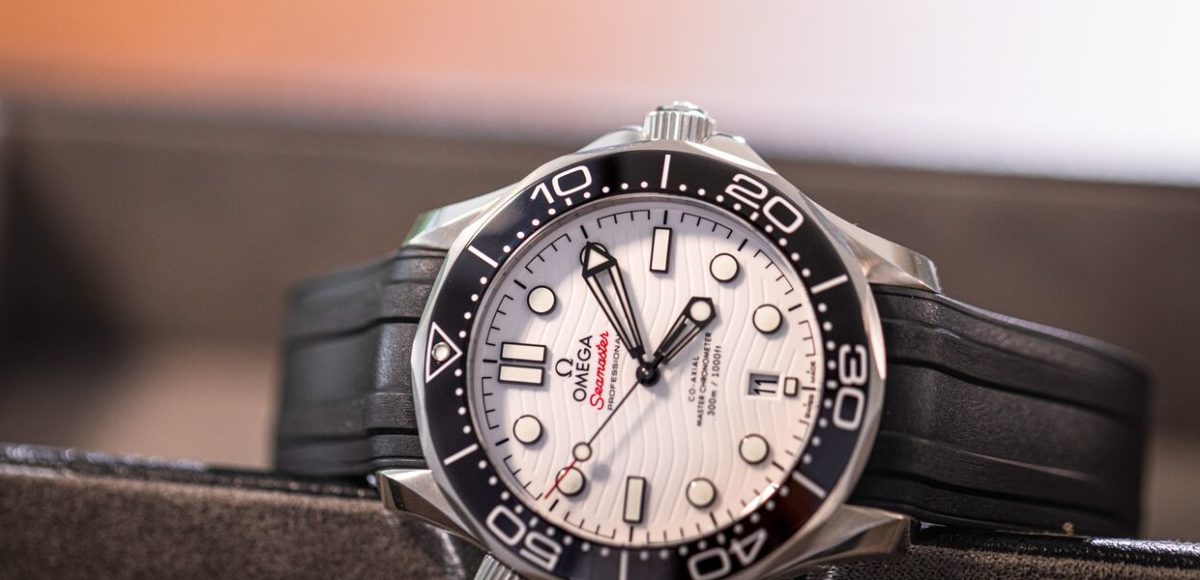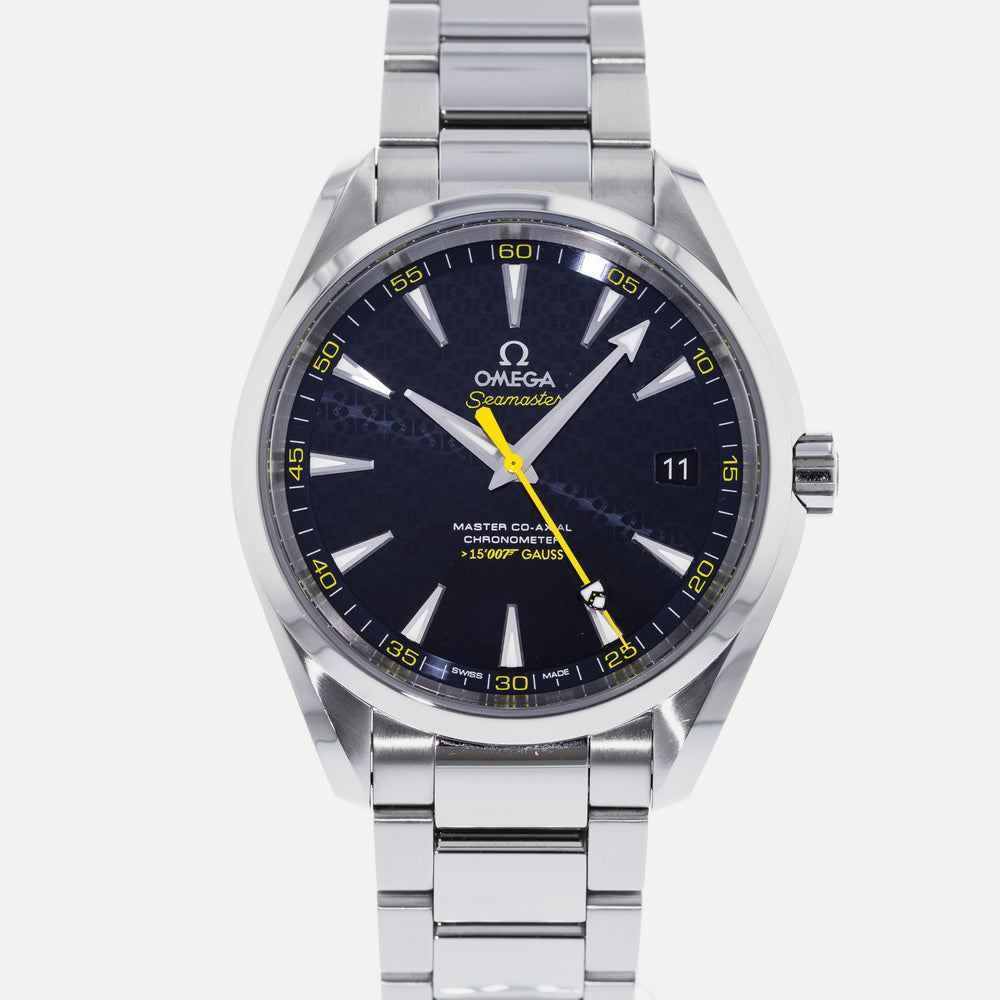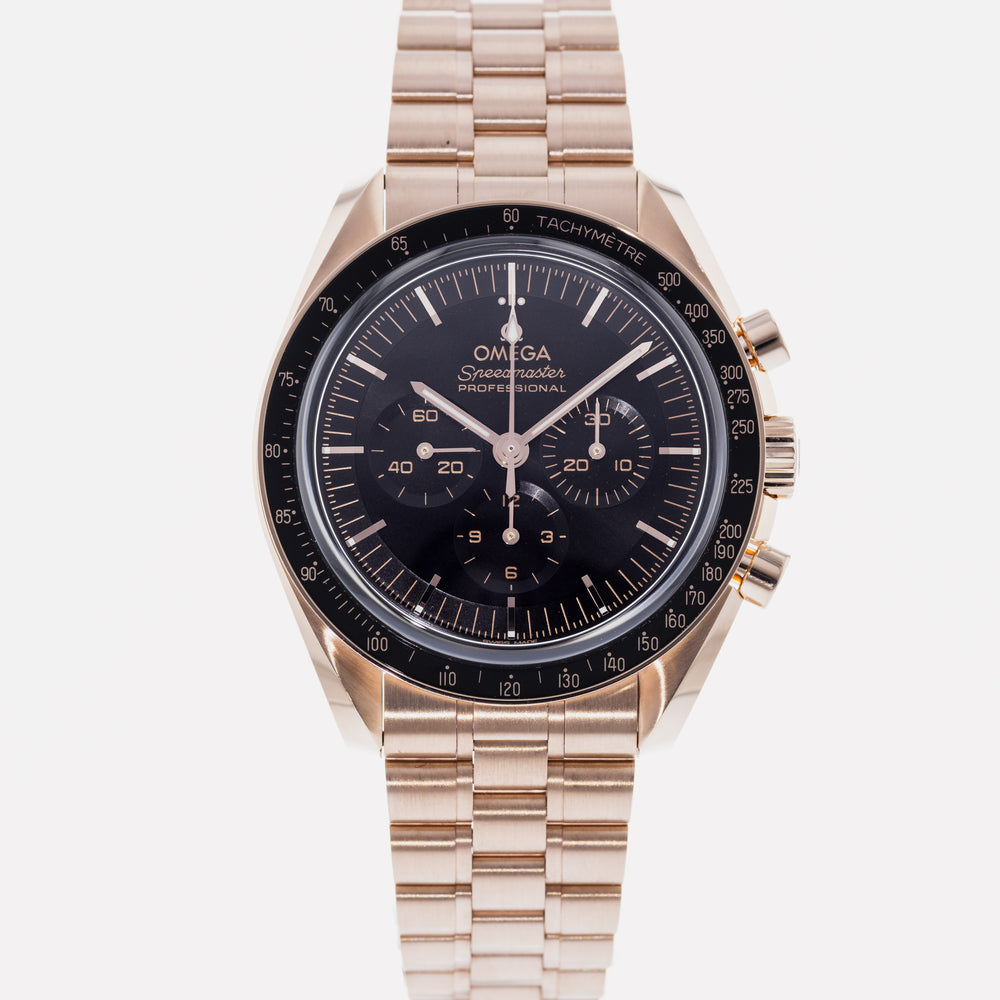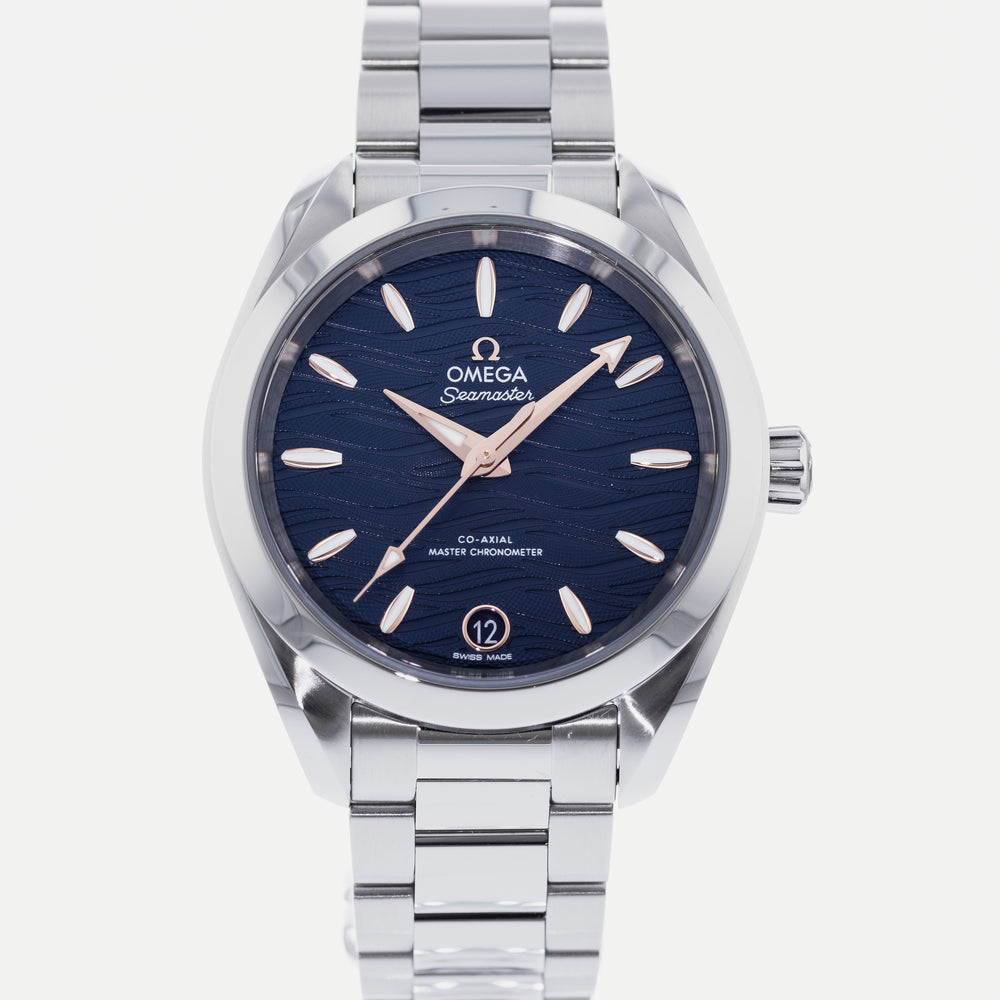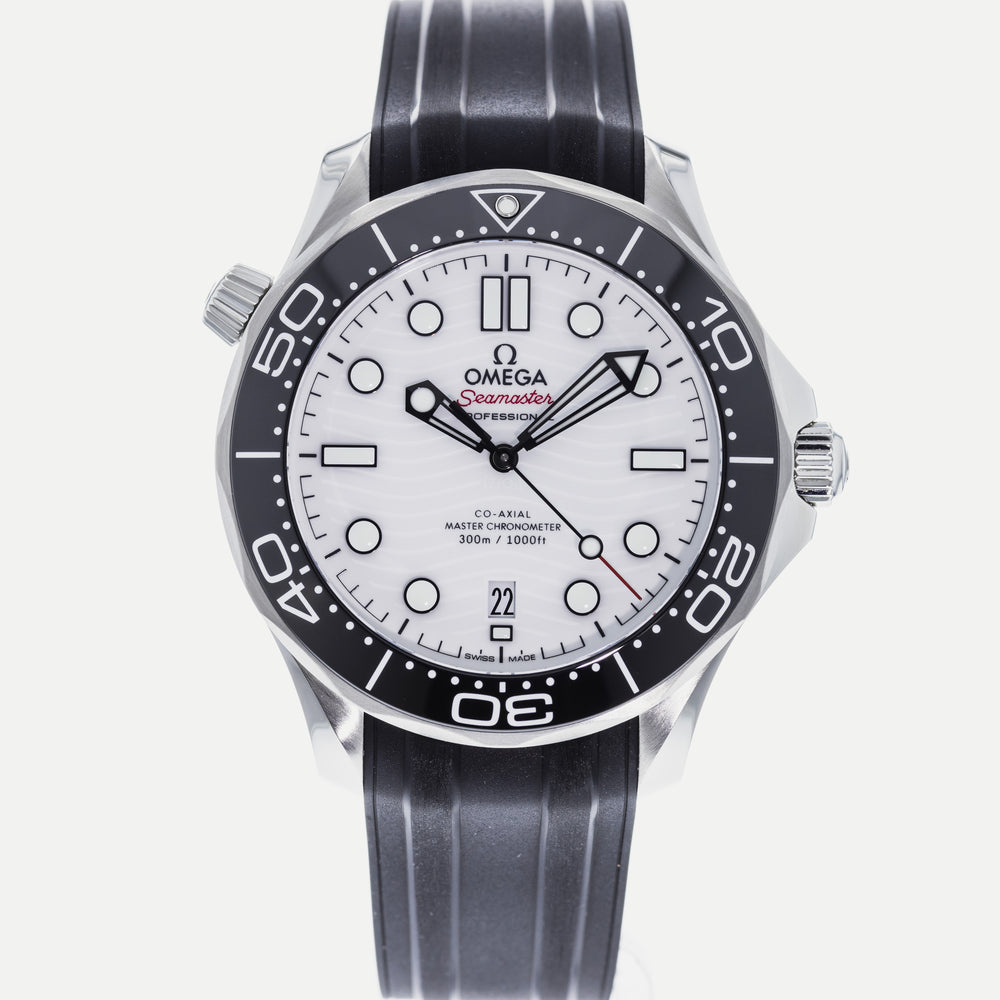Model numbers: those sometimes short and sometimes long string of numbers and letters associated with every watch must serve some purpose. Each watchmaker has their own style, Rolex uses 4-6 digits, Grand Seiko uses 4 letters followed by 3 numbers, and Omega uses 14 digits separated by periods along the way. While this all may sound confusing there is a method to the madness.
Since 2007 Omega has used the model number format of AAA.BB.CC.DD.EE.FFF, 14 digits – all with a different meaning. Unlike some watch brands that will use the same model number for watches that may look very different – looking at you Rolex – Omega keeps things neat and tidy with every variation of a watch they sell having its own model number.
Here is the quick breakdown:
AAA – the model family
BB – What the case material is made of and type of bracelet
CC – Case size in millimeters (rounded up if needed)
DD – Movement
EE – Dial color or material
FFF – Identifier if all other items similar, assigned sequentially
To go into a little more detail for each of those numbers the first set of 3 is the model family, If the number starts with:
1 – Constellation
2 – Seamaster
3 – Speedmaster
4 – De Ville
5 – Special release (this can mean an Olympic watch, Museum collection, or any other limited release that is not part of the typical Omega catalogue)
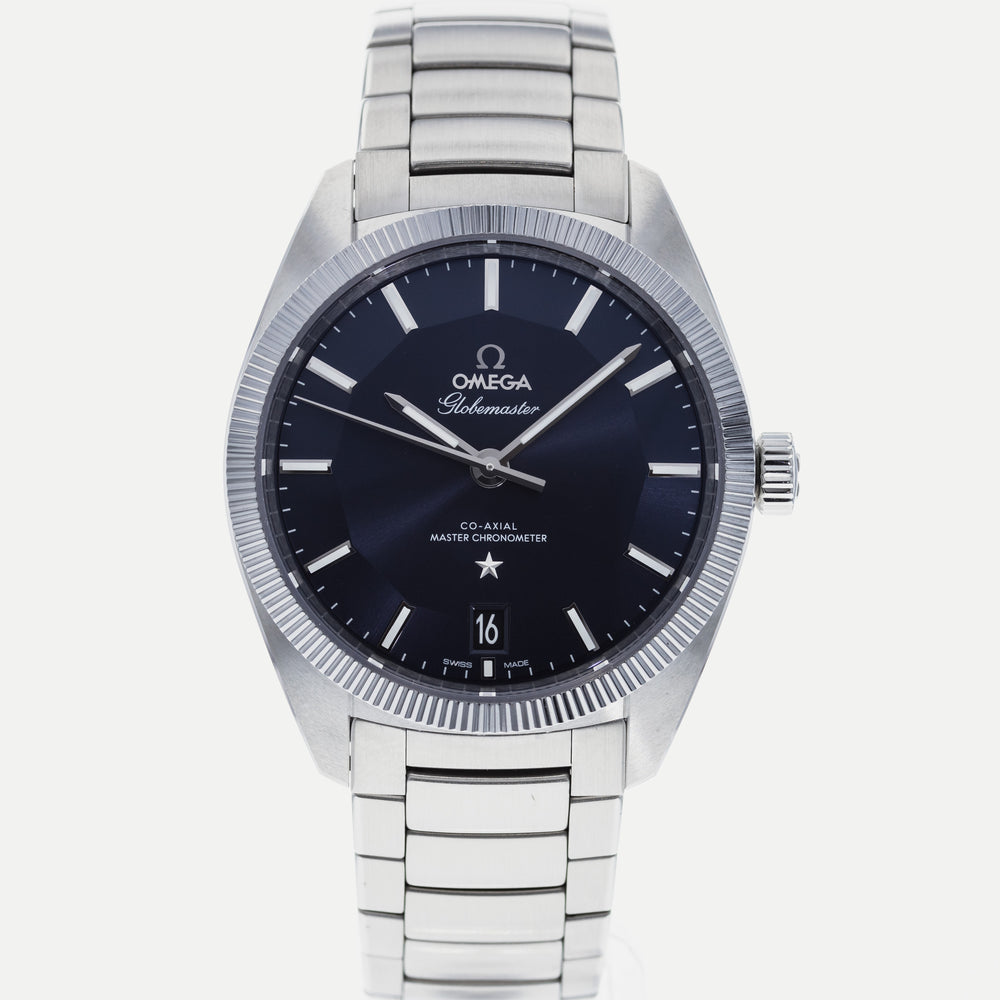
The “1” that starts the model number 130.30.39.21.03.001 means that this Globemaster is part of the Constellation collection
The Next 2 digits – aaa.BB.cc.dd.ee.fff – are the material used for the case and bracelet. This is a long list of different combinations, for the short version:
1-3 as the starting digit means it is primarily steel case
5 or 6 as the starting digit means that the case is primarily gold or gold plated
9 – is used for other materials, such as ceramic or titanium.
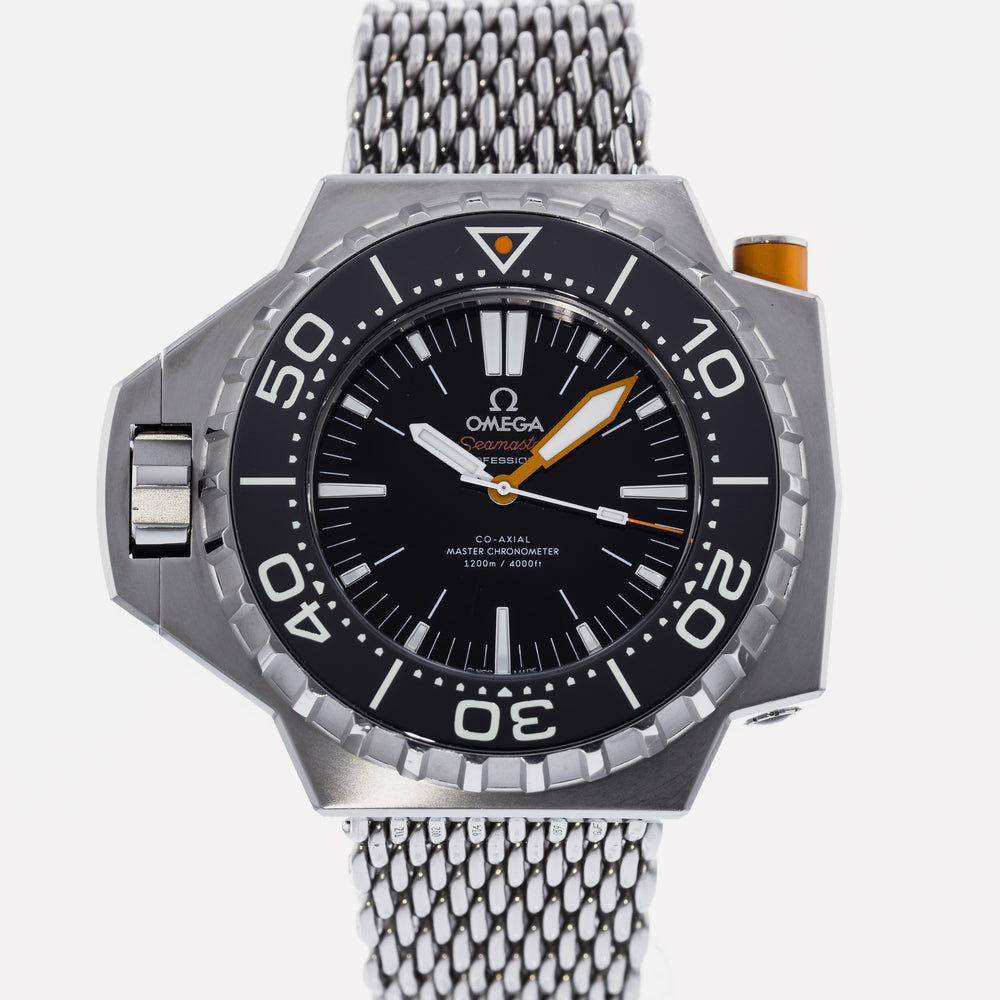
227.90.55.21.01.001 – the “90” is a quick way to identify this is a titanium version of the Ploprof and not an earlier steel model
The third set of numbers is the one that is most useful when shopping for watches, it is the case size. If you are shopping for an Aqua Terra and see the model number is 231.10.42.21.03.004, then you will immediately know the 42 stands for 42mm case diameter rather than a smaller 38mm sizing a similar watch would come in.
The fourth set of numbers – aa.bb.cc.DD.ee.fff – is the movement type. This will not get too specific about complications or certifications, rather it is a general description of the movement.
The first number stands for:
0 – Mechanical movement
1 – Mechanical with chronometer rating
2 – Mechanical Co-Axial movement
3 – Mechanical chronograph
4 – Mechanical chronograph with chronometer rating
5 – Mechanical chronograph with Co-Axial movement
6 – Quartz
7 – Quartz chronograph
The second number in this set is the number of complications from 0-9.
The fifth set of numbers – aa.bb.cc.dd.EE.fff is the dial color, including if it has gemstones. Examples of this are:
01 – Black
02 – Silver
03 – Blue
04 – White
11 – Red
63 – Brown with gemstones
This is a growing list as Omegas adds new colors
The final three digits at the end of the model number is randomly assigned by Omega. It can be an internal descriptor of something, or a way to tell two very similar models apart from each other, an example would be if an identical watch came on both brown leather and black leather and you wanted to give a distinction to which one came on each strap.
An example of putting this all together would be the Seamaster 300M 210.32.42.20.04.001
210 – Seamaster
32 – Steel case and rubber strap
42 – 42mm wide
20 – Mechanical Co-Axial movement with no extra complications added to base movement
04 – White dial
001 – First watch with this description produced
For all your Omega watch shopping needs go to Crown and Caliber
Get More Articles Like This in Your Inbox
We're constantly creating great content like this. So, why not get it delivered directly to your inbox? By subscribing you agree to our Privacy Policy but you can unsubscribe at any time.





